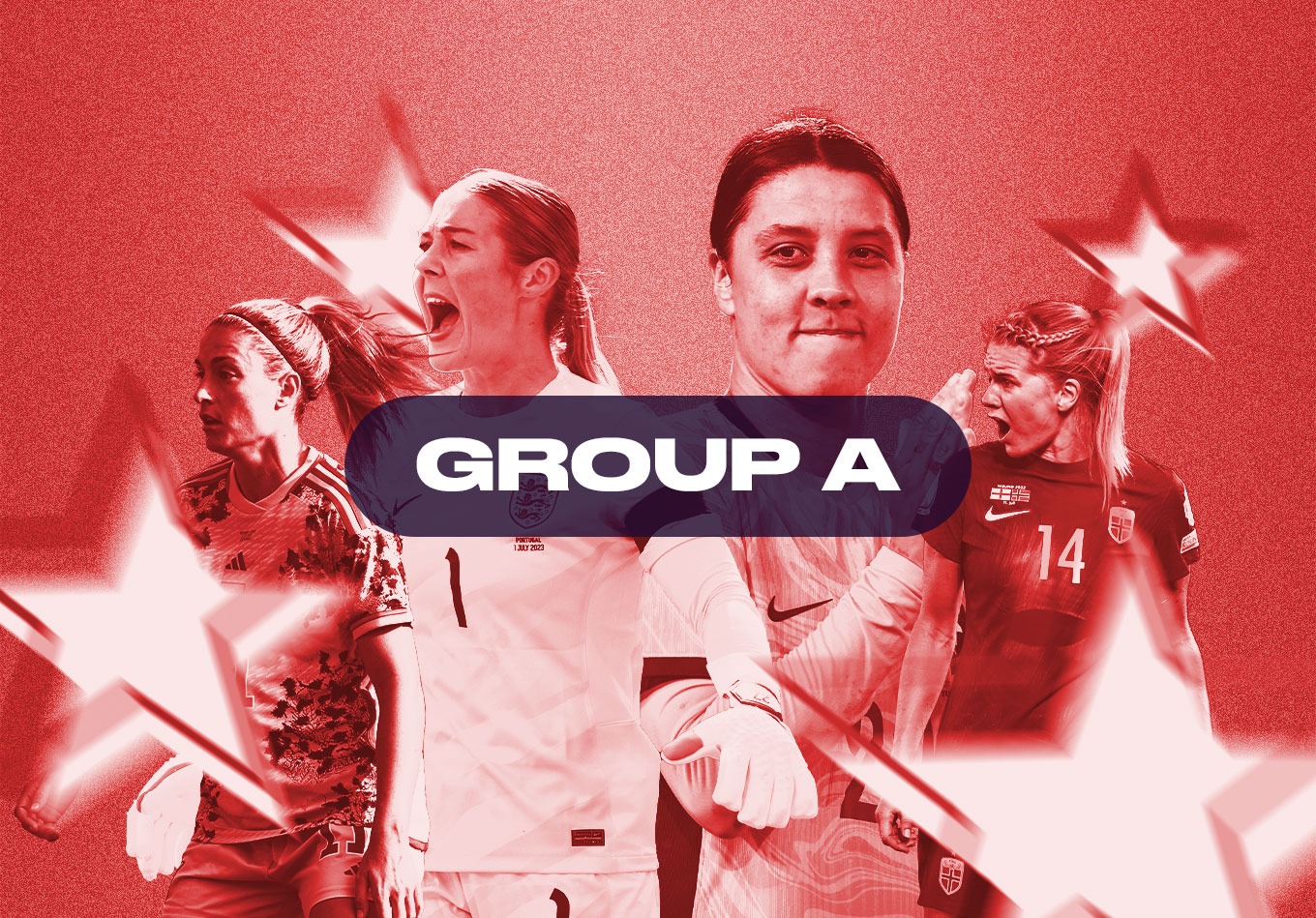Group A at the 2023 Women’s World Cup contains one of the two hosts, New Zealand. They will most likely battle it out with both Norway and Switzerland for a place in the knockout stages, but 2022 AFC Asian Cup semi-finalists Philippines won’t just be there to make up the numbers.
We look at the four teams in Group A and assess their qualities ahead of the tournament.
New Zealand
While women’s football has developed massively and fast over the last decade, things still need to improve. When the World Cup was given to the two nations in Oceania, New Zealand and Australia, they launched it under the phrase ‘As One’.
New Zealand doesn’t even have a domestic league for women, and the players in their squad announced for these finals all play abroad. But now they all return home to inspire a whole nation to join the women’s football movement.
“This is a chance for us to move forward with women’s football in New Zealand, and it’s an opportunity for us to do it together. I will do everything I can in the upcoming three years so that the experience people will have when visiting New Zealand for the tournament will be the best possible,” said national team captain and Angel City FC full-back Ali Riley back in 2020.
And now, here we are, ready for the World Cup 2023 to kick off. This tournament might be a month-long football party, but for the Ferns and New Zealand, it could be a time when a new history for the country can be written.
A Chance to Do the Impossible
The 2023 FIFA Women’s World Cup edition will be held across 10 stadiums, a tournament record. Six stadiums are in Australia, and four are in New Zealand.
New Zealand have participated in the tournament five times (1991, 2007, 2011, 2015 and 2019) but are yet to get past the group stage. They are the only team to have made five or more appearances at the tournament and have yet to reach the knockout stages.
Their best World Cup campaign so far came in Canada in 2015, where they gained two points from draws against the hosts and China after losing 1-0 to the Netherlands in their opening match. The 0-0 against Canada remains their only clean sheet in World Cup history.
Now, New Zealand, ranked 26th in the latest FIFA rankings, have the chance to do what they have never done before – reach the knock-out stage of the World Cup. They have history on their side, with each of the previous eight editions of the Women’s World Cup seeing the hosts do so.
To get past the group stage, they’ll have to do something else they’ve never previously done at a WWC – win a match. They hold an unwanted record coming into this tournament, having played the most games in the competition without winning (15).
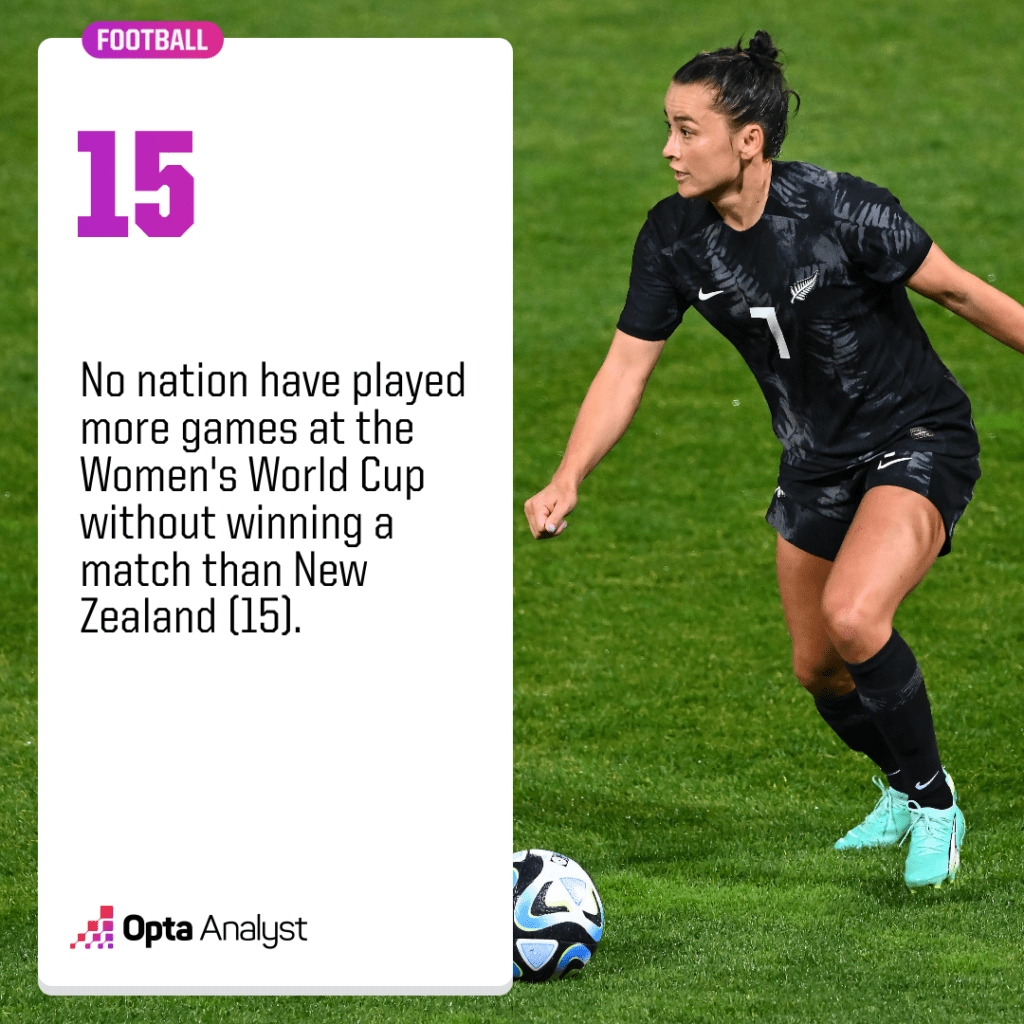
How Far Can New Zealand Go?
A good start would be helpful. So far, they’ve lost their opening match at all five of the World Cup tournaments that they’ve been a part of and only scored one goal across these matches.
Not playing the Netherlands on matchday one is a start, having lost 1-0 to the Dutch in the opening game of the last two tournaments in 2015 and 2019, but it won’t be an easy task against the 12th best team in the world according to the FIFA rankings, Norway.
They’ll need goals to get through Group A. Goalscoring is something that’s abandoned them in previous tournaments, but Melbourne City striker Hannah Wilkinson has had some success in the past. She is the only player to have scored more than once at a World Cup for New Zealand in the past, and she was the last player to score for them at the tournament in 2015 (vs. China). Whilst New Zealand got on the scoresheet at the 2019 finals, that was via an own goal.
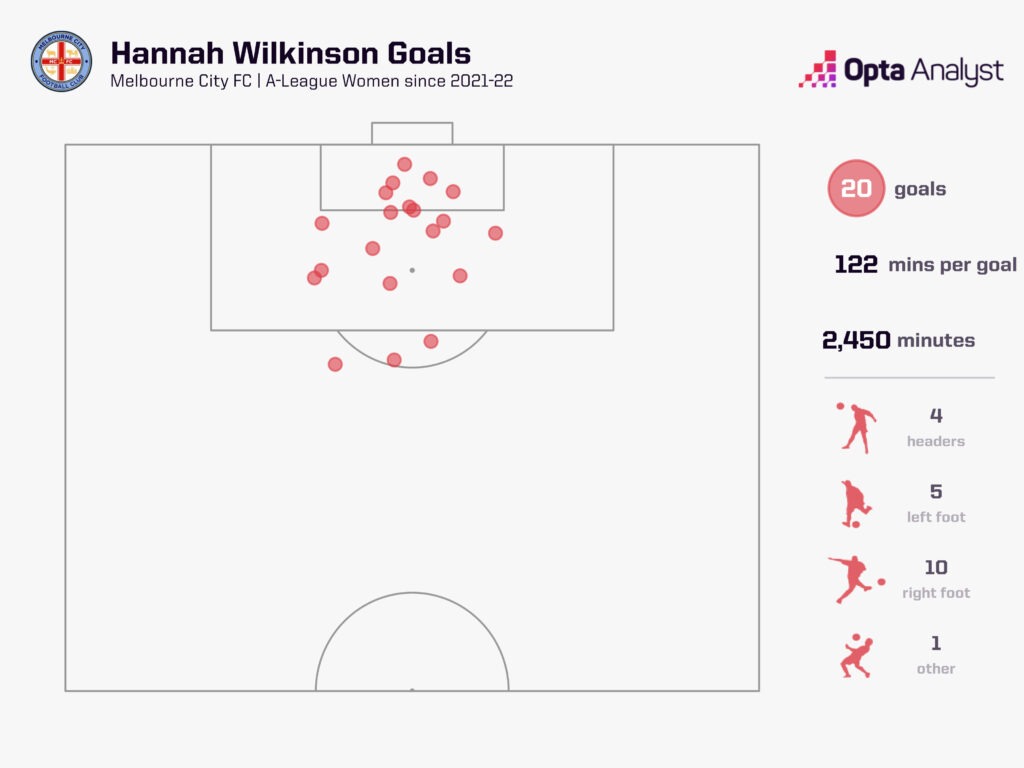
Across the last two seasons of Australian A-League Women action, only Michelle Heyman (21 in 32 games) has more goals than Wilkinson (20 in 28 games), with the New Zealand star scoring from nearly a quarter of her shots (24.1%) and averaging a goal every 122 minutes in the competition. Opposition defences will need to be wary of the threat she poses.
Experience will also be key to getting them to the knockout stage, with 35-year-old captain Ali Riley and her defensive partner, Tottenham’s 33-year-old Ria Percival, having played more World Cup games than anyone else in the squad (12).
Norway
The Norwegians are looking to seek revenge for years of failing to succeed on the biggest stage even though, on paper, they should have been among the teams in the latter stages. They made it to the semi-finals in four of the first five World Cup tournaments but have failed to get past the quarter-finals in the three editions since 2011.
Norway are one of seven teams to have qualified for all nine FIFA Women’s World Cup tournaments, including being one of only three European nations, alongside Germany and Sweden, to play in each edition. In the first edition back in 1991 they lost 2-1 in the final against the USA before beating Germany 2–0 in 1995, their only World Cup title so far.
What Can We Expect?
They have a tricky first game against co-hosts New Zealand, but Norway have won their last seven opening matches of a FIFA Women’s World Cup tournament, since the 1995 edition. The only time they lost their first game at the WWC was in the inaugural tournament in 1991 (4-0 vs. China).
With a host of talent among their ranks in attacking positions, the Norway squad contains some of the best players in club football, but they have yet to really show that talent as a group with the national team.
There is a certain level of expectation for this tournament, with the squad containing the likes of Caroline Graham Hansen (Barcelona), Guro Reiten (Chelsea), Frida Leonhardsen Maanum (Arsenal) and Ada Hegerberg (Olympique Lyonnais).
Who’s Going to Do It for Norway?
In the last edition of the tournament in 2019, Hansen attempted 11 shots, with five of those on target in the last 16 match against Australia – both were the most of any player in a WWC knockout match across the last three tournaments.
The Barcelona star should yet again play a huge role in leading the Norwegian attack at this tournament.
She arrives at these finals having had one of the most successful seasons in her career so far, winning both the Spanish Liga F title and UEFA Women’s Champions League with Barca. There’s a strong chance she will be seen as one of the contenders for the FIFA Ballon d’Or this year following a 2022-23 campaign that saw the winger play a part in 17 goals (11 goals, six assists) in just 13 league appearances. Of players to rack up at least 500 minutes in the competition last season, nobody played a part in a non-penalty goal as frequently as she did (every 46 minutes).
Frida Maanum was the most regular player for Norway during World Cup qualification, playing 813 minutes of action across 10 games – 51 minutes more than Barcelona’s Ingrid Engen.
Maanum arrives at the World Cup following a brilliant season at club level with Arsenal, where she has mastered the role of an attacking midfielder brilliantly in the absence of Dutch superstar Vivianne Miedema.
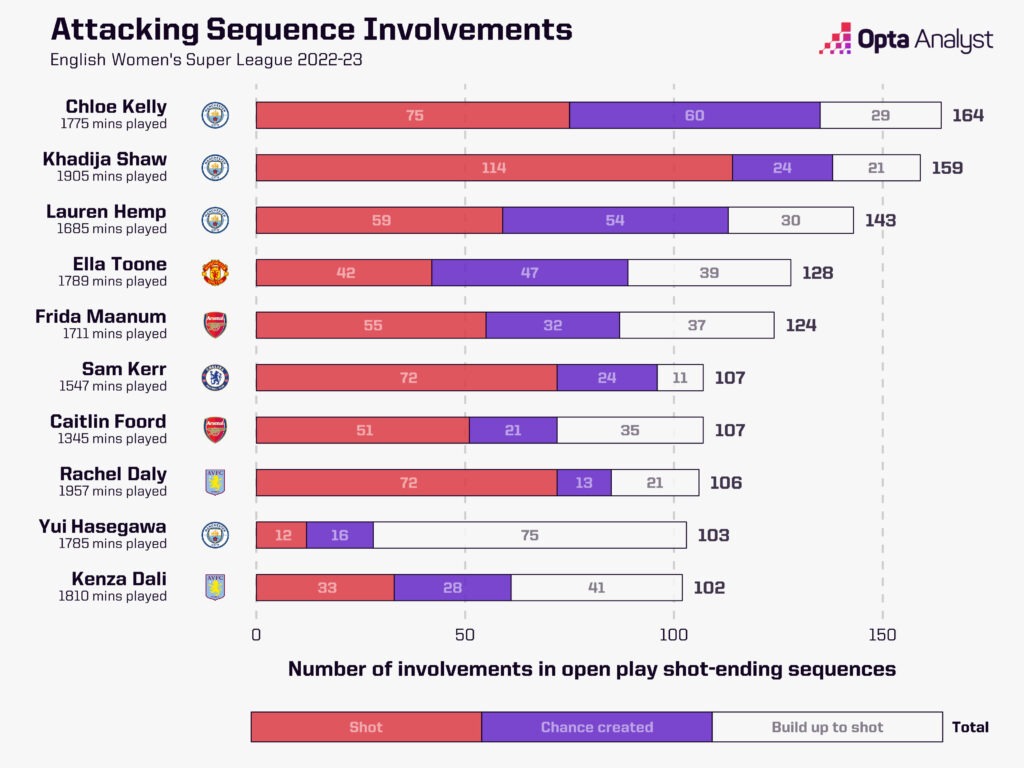
The 24-year-old will play a significant role for Norway in creating chances to score while also getting into space to fire shots from range herself. Across the Women’s Super League (WSL) last season, only four players were involved in more open-play attacking moves ending in a shot than Maanum (124), and 17 more than any other player at Arsenal.
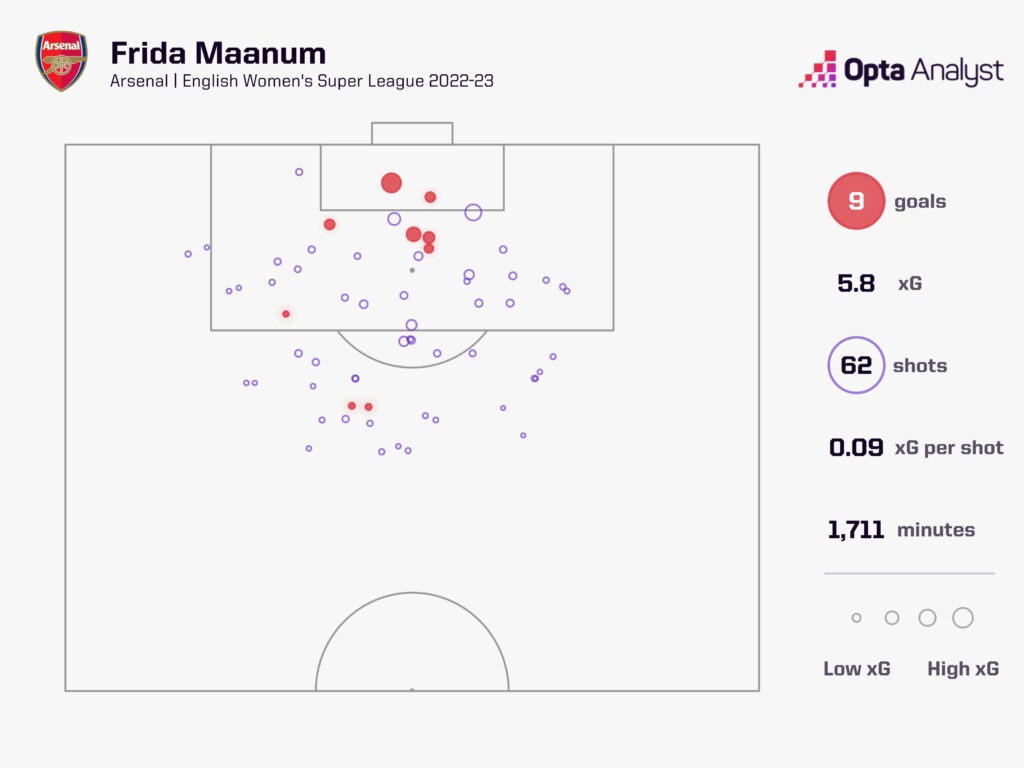
She finished the 2022-23 season as Arsenal’s top scorer in the league with nine goals, while only Stina Blackstenius (70) attempted more shots than she did (62). One thing to look out for is her ability to test goalkeepers from range – no player attempted more shots from outside the box in the 2022-23 WSL than her (31), with a league-high 16 of those finding the target.
Whilst Maanum was one of Norway’s most threatening players in qualification, they relied on Guro Reiten for her creativity. Across the whole squad, Reiten led the way with 42 chances created overall in the qualifiers – double that of any other Norway player.
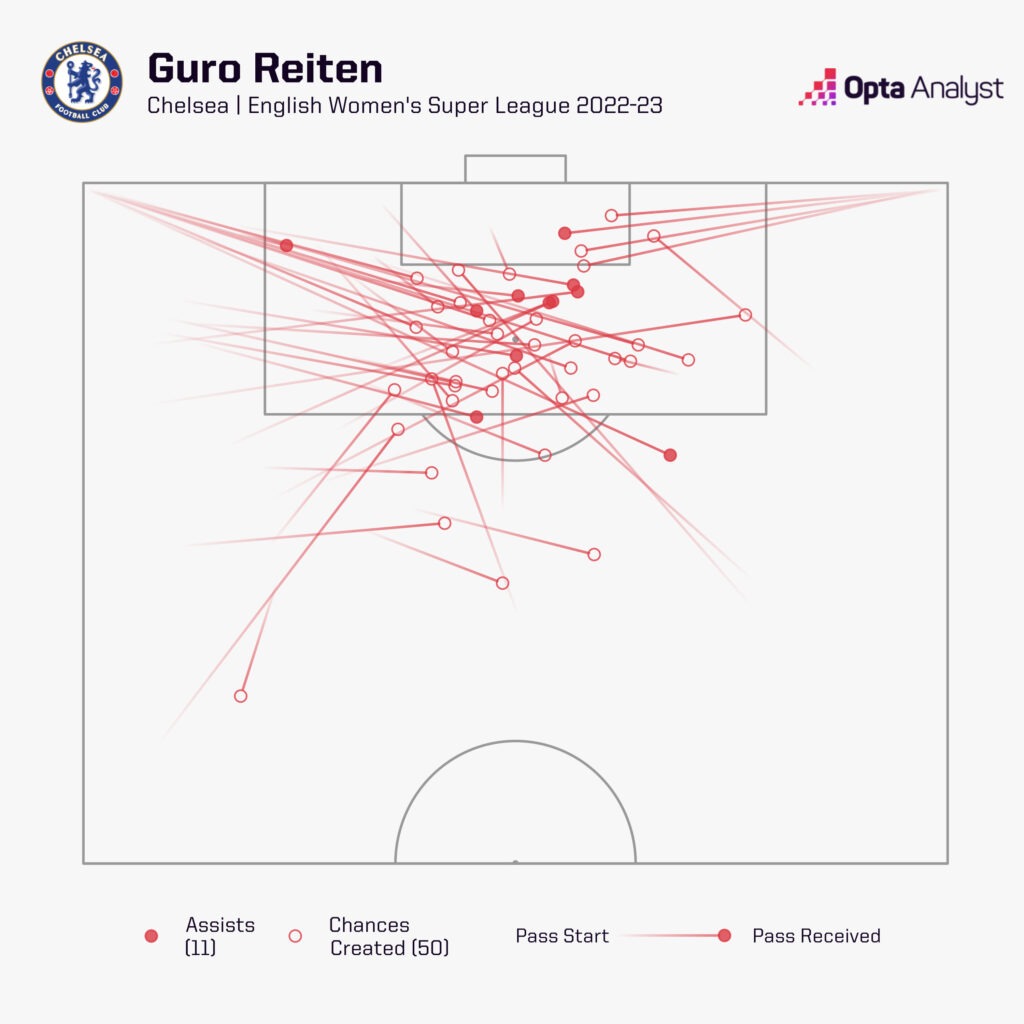
She assisted 11 goals in the WSL for Chelsea in 2022-23, a league-high, while only three players created more chances for teammates than she did (50) in the competition.
Reiten’s role for Norway differs slightly to that at Chelsea under Emma Hayes. Fans should expect to see her covering a lot of ground in these finals in the number 8 role and playing box-to-box.
With the attacking talent in this Norway squad, they can’t afford to leave this World Cup with yet another mediocre performance.
The Influence of the Coach
Head coach Heege Riise has a unique opportunity to become the first woman to win the World Cup as a player and manager. She lifted the trophy when playing with Norway in 1995, also claiming the Golden Ball award that year.
She will need to get the players to perform much better than they did last summer at the UEFA European Championships in England, where they exited at the group stage and suffered a demoralising 8-0 loss to the hosts in their second match.
Some Norwegian players have already played under Riise, such as Reiten during her time in LSK Kvinner. Riise has started to build a foundation of national team players from the domestic league, Toppserien. Nine of the players selected for the Women’s World Cup play in the Norwegian top-flight.
While no one might doubt that Norway have goalscoring abilities up front, their defence has been the most significant issue in recent years. Since Riise took charge last autumn, the performances have shown there is still work to do defensively, both as a team and for the backline.
Their most impressive performance recently happened in the Tournoi de France in February when Norway played a goalless draw against the hosts. Ironically, the star-stacked Norwegian team didn’t manage a shot on target in that clash, but they were without Hansen and Hegerberg.
A tactical note from that game was national team captain and Chelsea defender Maren Mjelde acting as a number 6 in the defensive midfield in the buildup but dropping deeper as a fifth defender out of possession as a third centre-back. Time will tell if Riise has some of those tactical twists to apply in Australia and New Zealand.
Switzerland
The Golden Opportunity
This may only be their second appearance at a Women’s World Cup tournament, but should Switzerland not qualify for the knockout stage of the 2023 edition, it’ll be deemed a failure considering a kind group stage draw.
Back in 2015, they were eliminated by hosts Canada in the round of 16 but will be hoping for better this time around against the hosts, with New Zealand arguably their biggest threat to progressing.
After replacing Nils Nielsen as head coach after last year’s European Championship finals, Inka Grings told the media she wanted to enforce attacking football on her Swiss side rather than being defensive. Switching formation was the first major action by Grings, who favours both a 4-1-2-3 shape and the more offensive 4-3-3 on occasion.
That offensive shape will surely be deployed against both the Philippines in game one, before the likely final group game showdown with New Zealand.
The Leader
Switzerland looked to have suffered a huge blow to their World Cup aspirations in May when their national team captain Lia Wälti suffered an ankle injury playing for Arsenal in the WSL against Everton.
Luckily for the Swiss, the verdict suggested she would be sidelined for six weeks, meaning she should be able to regain fitness for the World Cup.
As the Swiss player to make the most appearances in qualifying for these finals (11) alongside Barcelona’s Ana-Maria Crnogorcevic and Servette’s Coumba Sow, Wälti’s absence would have certainly been felt by the national team.
Wälti was a vital player in a wounded Arsenal side last season, and the Swiss captain should lead her side into the opening game against the Philippines on 21 July.
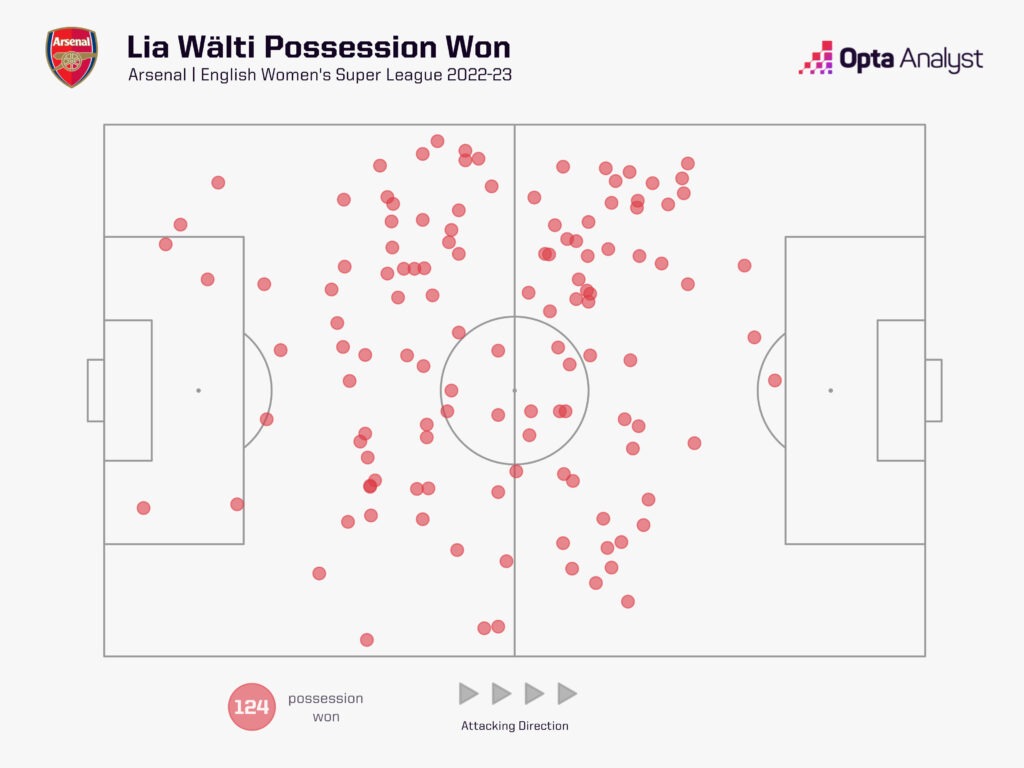
She will be crucial to Switzerland breaking up opponents’ passing sequences at this tournament – something she also excelled at for Arsenal in the WSL last season.
Among all players, only Katie Zelem (113) and Japanese star Yui Hasegawa (91) won possession back from opponents in the middle third of the pitch more often than Wälti (87), with the Arsenal star averaging more on a per 90 basis (5.5) than the leading pair. She was also among the top six midfield/forward players in the competition for progressive passes (90) in 2022-23, showing her importance to advancing her side up the pitch, too. Expect more of the same at the World Cup.
Who Will Score the Goals?
In their previous Women’s World Cup tournament appearance in 2015, the main Swiss goal threat came from both Ramona Bachmann and Fabienne Humm, with three goals each.
All three of Humm’s goals came the 10-1 thrashing of Ecuador at those finals, where she scored a hat-trick in the space of just 247 seconds – a women’s World Cup record.
Humm also scored the vital goal to get them to this World Cup, netting a goal in injury time of extra-time against Wales in a 2-1 win, after Bachmann had scored the opener for the Swiss. Surprisingly, that was only Humm’s second goal in the UEFA qualification campaign, while Bachmann had six.
In truth, Switzerland would have considered themselves unlikely to have to go through the play-offs to get to these finals, with their 25-point tally was the most of any side not to top a qualification group in the UEFA region.
The likeliest source of goals at these finals will arguably come via either Crnogorcevic or Sow, who both scored nine times in qualification (including the play-offs).
Crnogorcevic enters the World Cup this summer off the back of a decent showing in Spain’s top flight at Barcelona in 2022-23. She contributed eight goals and six assists in 1,529 minutes of league action, with a goal involvement every 109 minutes on average. She was also among the leading chance creators at Barcelona last season, with 38 from open play – the sixth-highest total.
The winger will be a key player for the Swiss in this tournament, where she could thrive in the more attacking 4-3-3 formation in the group stage.
Philippines
With an expanded 32 nations playing at the 2023 edition – up from 24 in 2019 – we’re seeing some sides play in their first women’s World Cup. One of those debutants are the Philippines.
They won’t be at the 2023 finals just to make up the numbers though. They reached this tournament following their best ever finish at the AFC Asian Cup in 2022, where they reached the semi-finals before eventually losing 2-0 to South Korea – one stage further than Australia, who were eliminated in the quarter-finals.
What the Debutants Can Deliver?
Only one previous team from the AFC confederation have won their opening WWC game – China in 1991. The opposition standing in their way in New Zealand on matchday one will be Switzerland.
None of the Philippines squad played in Europe’s top five leagues in 2022-23, but three did play a decent number of minutes in Australia’s A-League, with Western United pair Angela Beard (932 minutes) and Jaclyn Sawicki (799) joined by Sarina Bolden of Western Sydney Wanderers (768 mins) in their 23-woman selection for this tournament. Bolden wasn’t particularly threatening in league action last season at club level, with one goal in 10 appearances across 2022-23, she was busy at the AFC Women’s Asian Cup to qualify for this tournament. Only Australia’s Sam Kerr (27) and Japan’s Riko Ueki (22) attempted more shots than she did (19) overall.
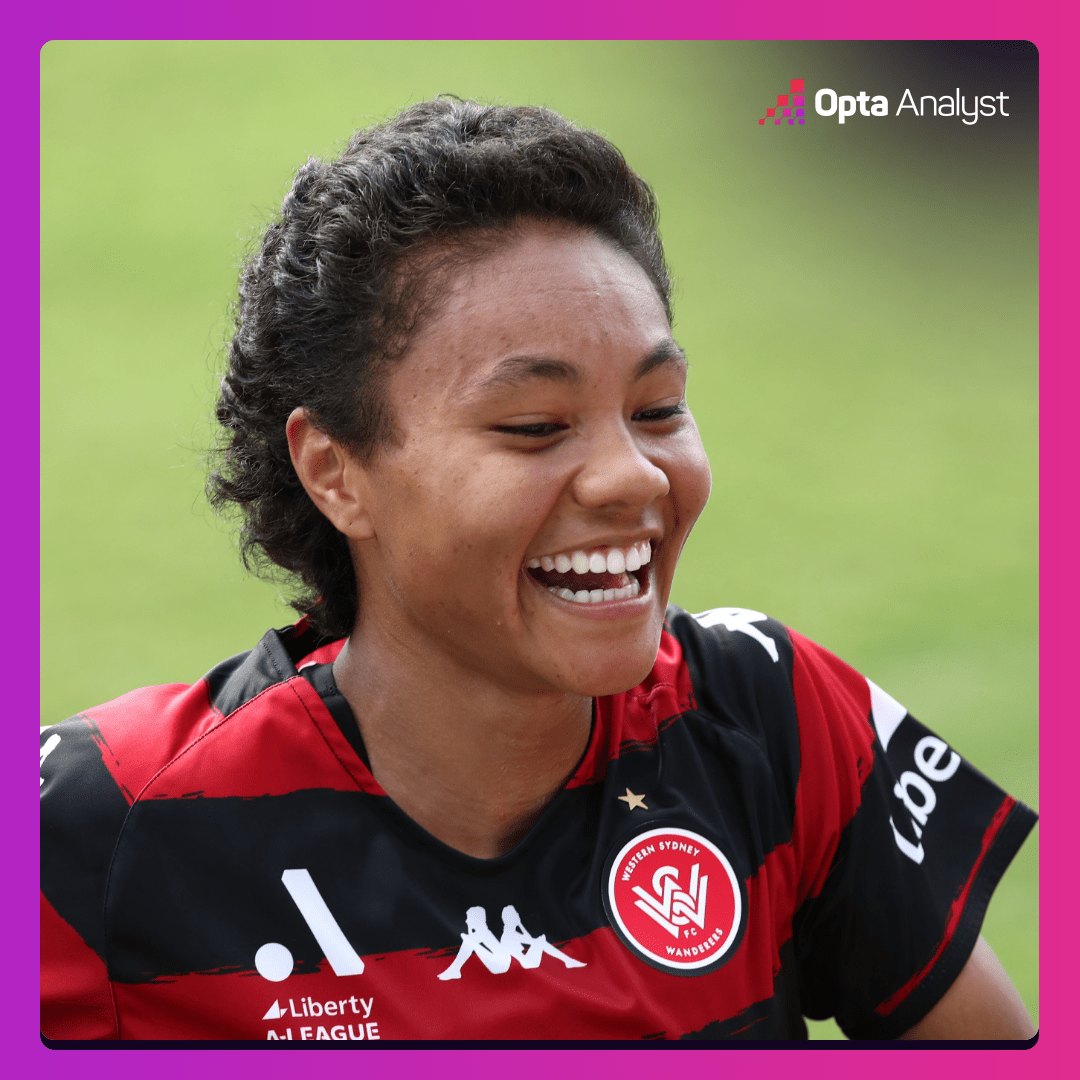
Enjoy this? Subscribe to our mailing list to receive exclusive weekly content. And follow us on Twitter too.
